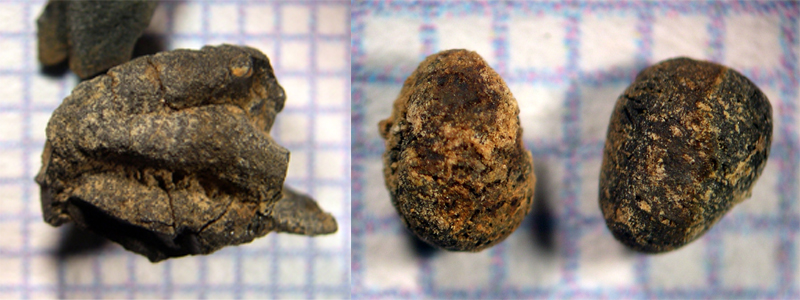Featured Fragment—Archeobotanical Studies
In the summer of 2014 Dovetail Cultural Resource Group conducted a Phase III excavation on a late-eighteenth century site in Fredericksburg, Virginia. While this site produced an abundance of artifacts—noteworthy on their own and the subject of a previous ‘Featured Fragment’ blog—Dovetail also recovered many non-traditional artifacts intermixed with the ceramics and glass at the site. As part of the data recovered, Dovetail collected soil samples that were analyzed by archeobotanical consultant Justine McKnight of Archeobotony. Samples were taken from all features including a borrow pit and several post holes associated with a former post-in-ground building.
One sample in particular showed that the wood from a post had rotted before it burned, indicating that the structure may have been in very poor condition by the time the site was abandoned around 1795 (McKnight 2014:8). The poor condition of the post is not surprising since it was made of white oak, which tends to be much less resistant to rot than cedar or black locust (Carson et al. 1981:156). However, white oak, from which the post was constructed, fared much better than red or black oak (Carson et al. 1981:156). The fact that a high amount of possible bark was recovered from this feature may also indicate that the post bottoms were left undressed as a form of protection against rot, which has been seen in other eighteenth-century buildings such as Cedar Park in Maryland (Carson et al. 1981:189).
The meticulous archeobotanical studies conducted by Justine McKnight with Archeobotany provided another layer of information on the site that not only told researchers the type of wood being used in the buildings, but also possibly preferred methods of construction and the demise of the dwelling.
Any distributions of blog content, including text or images, should reference this blog in full citation. Data contained herein is the property of Dovetail Cultural Resource Group and its affiliates.

